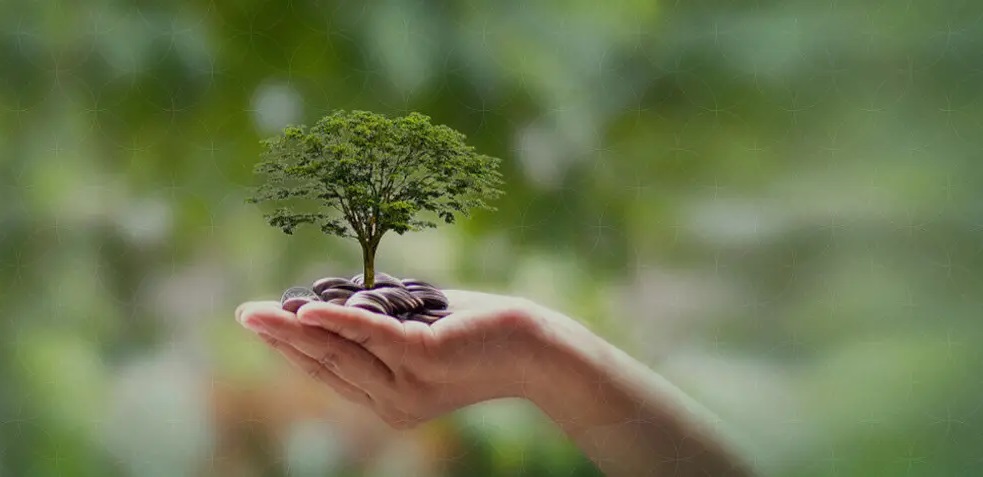Blog

Unveiling the Plastic Footprint: Understanding, Quantifying, and Addressing Plastic Pollution
Unmasking Plastic Pollution: Examining Our Collective Impact on the Environment
Plastic pollution has become a pervasive environmental issue of global concern, with profound implications for ecosystems, wildlife, and human health. At the heart of this problem lies the concept of a "plastic footprint" – a measure of the amount of plastic waste generated by individuals, organizations, communities, or nations over a specific period. Much like a carbon footprint measures the amount of carbon dioxide emissions produced, a plastic footprint quantifies the environmental impact of plastic consumption and disposal. It encompasses not only the plastic products directly used but also the plastic packaging, containers, and other items associated with daily activities. Tracking and reducing plastic footprints are critical steps in mitigating plastic pollution and its detrimental effects on the planet.

Understanding and quantifying individual plastic consumption is a complex endeavor that involves analyzing various sources of plastic use in daily life. Several methods and sources can help shed light on the extent of plastic consumption by individuals:
Surveys and Questionnaires: Researchers often employ surveys and questionnaires to gather data on individual plastic consumption habits. These surveys may inquire about the types of plastic products used, frequency of use, disposal methods, and attitudes toward plastic waste reduction.
Waste Audits: Conducting waste audits involves sorting and quantifying the types and amounts of plastic waste generated by individuals or households. By analyzing discarded items in waste streams, researchers can directly measure plastic consumption.
Retail Sales Data: Analysis of retail sales data offers insights into the types and quantities of plastic products purchased by individuals. This includes items such as plastic packaging, disposable utensils, personal care products, and household goods.
Packaging Assessments: Researchers may assess product packaging to estimate the amount of plastic used per individual. This involves analyzing the packaging materials of commonly consumed products and extrapolating consumption rates based on population demographics.
Digital Footprint Analysis: With the rise of e-commerce and digital transactions, analyzing online purchase histories and consumption patterns can provide insights into individual plastic consumption, particularly for items shipped in plastic packaging.
Carbon and Plastic Footprint Calculators: Online tools and calculators allow individuals to estimate their carbon and plastic footprints based on lifestyle choices and consumption habits. These calculators rely on average consumption rates and conversion factors to estimate plastic usage.
Statistics on individual plastic consumption vary by region, lifestyle, and socioeconomic factors. Globally, plastic consumption per capita has been on the rise, driven by population growth, urbanization, and the widespread use of plastic products across various sectors such as packaging, food and beverage, construction, and transportation.

For instance, in the United States, the average person generates approximately 300 pounds of plastic waste per year. Similar figures are reported in other high-income countries. In contrast, in lower-income countries, per capita plastic consumption may be lower but is rapidly increasing as economic development progresses.
It's important to note that these statistics are approximate and can vary based on cultural norms, waste management infrastructure, and individual consumption behaviors. Efforts to reduce plastic consumption and promote sustainable alternatives can influence these trends over time.
Exact statistics on plastic pollution per individual can be challenging to provide due to variations in consumption patterns, waste management infrastructure, and data availability across different regions. However, estimates and statistics related to plastic pollution per individual include:
Microplastics Ingestion: Research suggests that individuals may inadvertently consume microplastics through food, water, and air. Studies indicate that people could ingest tens of thousands of microplastic particles annually, although the health implications are still being studied.
Plastic Fibers in Drinking Water: Studies have found plastic fibers present in over 90% of tap water samples collected from various countries. This suggests that individuals may be exposed to plastic contamination through drinking water.
Plastic Consumption from Seafood: Research estimates that individuals who consume seafood could ingest up to 11,000 pieces of microplastic annually, primarily through the consumption of shellfish.
Plastic Packaging Waste: Individuals contribute to plastic pollution through the consumption of packaged goods, including food, beverages, personal care products, and household items. Single-use plastic packaging, in particular, contributes significantly to plastic waste generation.
Plastic Waste Generation: Estimates of plastic waste generation per capita vary widely by country and region. Individuals in some high-income countries may generate over 100 pounds of plastic waste annually.
Plastic Pollution Awareness: Surveys and studies indicate that individuals are increasingly aware of the plastic pollution problem and are taking steps to reduce their plastic consumption. Efforts include minimizing single-use plastics, using reusable products, participating in recycling programs, and supporting policies aimed at reducing plastic pollution.
While these statistics offer insights into individual contributions to plastic pollution, it's essential to recognize that addressing the plastic pollution problem requires systemic changes at the societal, corporate, and policy levels, in addition to individual actions.

Identifying the "worst" continent in terms of leaving a plastic footprint is a complex task that involves considering various factors such as population size, consumption patterns, waste management infrastructure, and levels of plastic pollution. While pinpointing a single continent as the worst offender may be challenging, certain regions experience higher levels of plastic pollution and have larger plastic footprints compared to others.
For instance, Asia is often cited as a region facing significant challenges related to plastic pollution. With over half of the world's population and rapid economic development, Asia generates substantial amounts of plastic waste. Limited waste management infrastructure exacerbates the problem, leading to plastic pollution in rivers, oceans, and coastal areas.
North America and Europe also contribute significantly to global plastic pollution, driven by high levels of consumption and reliance on plastic packaging. While these regions have relatively better waste management systems, they still face challenges in managing plastic waste effectively.
Oceania, including Australia and the Pacific Islands, faces unique challenges due to its remote location and dependence on marine ecosystems. Coastal pollution and plastic waste are significant concerns in this region, impacting marine wildlife and ecosystems.
Overall, addressing plastic pollution requires concerted efforts across continents to reduce plastic consumption, improve waste management practices, and promote sustainable alternatives.
In addressing the pervasive issue of plastic pollution, innovative solutions are crucial. One such solution is ZeLoop, a groundbreaking initiative spearheaded by SmartBlock Beverages FZ LLC. ZeLoop is more than just a mobile app; it's a movement towards a greener, healthier planet. By incentivizing users with cryptocurrency and prizes for engaging in sustainable behaviors, ZeLoop encourages everyone to play an active role in environmental conservation. Whether it's recycling, reducing plastic usage, or adopting eco-friendly habits, every action counts towards building a more sustainable future. What sets ZeLoop apart is its holistic approach to sustainability. Beyond waste management, ZeLoop serves as a platform for education, inspiration, and collaboration. From sharing tips on eco-friendly living to celebrating user achievements, our community is united by a shared commitment to creating positive change. With ZeLoop, individuals can take tangible steps towards reducing their plastic footprint and contributing to a cleaner, greener world.
Stay tuned for more updates on advancements Environmental PhilanthroInvesting and its collaborations.

About PhilanthroInvestors
PhilanthroInvestors combines traditional venture capital financing tools with philanthropic principles to achieve social impact. By secure, meaningful, and profitable investments, they bring capital and also change people’s lives.
PhilanthroInvestors are currently working in four sectors – Housing, Water, Health and Environment – and will be adding more investment sectors in the future. PhilanthroInvestors founder Ivan Anz owns companies on three continents and has investors in 14 countries.
Discover how investing with us can secure your future. Get in touch here.
© 2025 l PhilanthroInvestors®
THE CONTENT OF THIS SITE DOES NOT CONSTITUTE AN OFFER TO SELL OR THE SOLICITATION OF AN OFFER TO BUY ANY SECURITIES.





